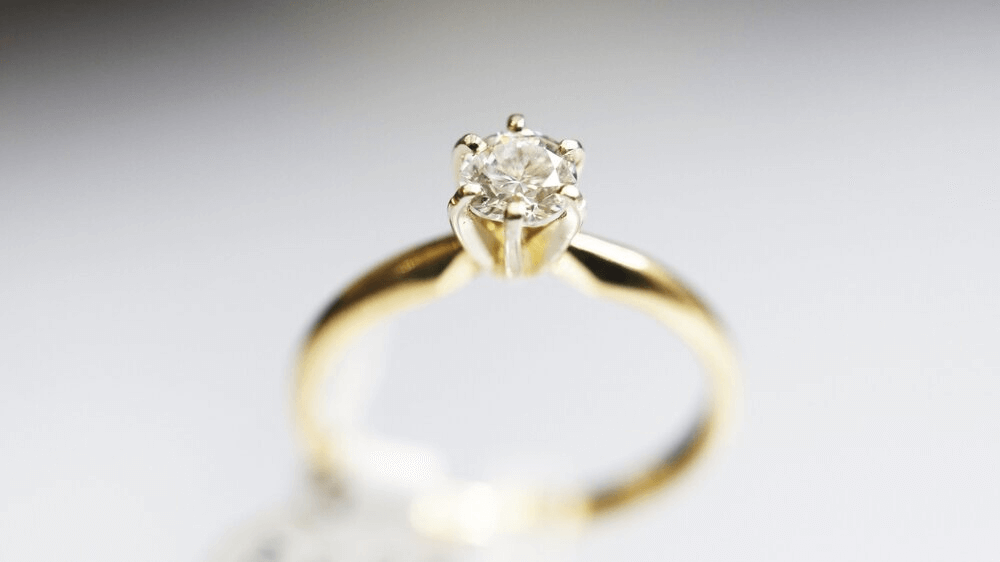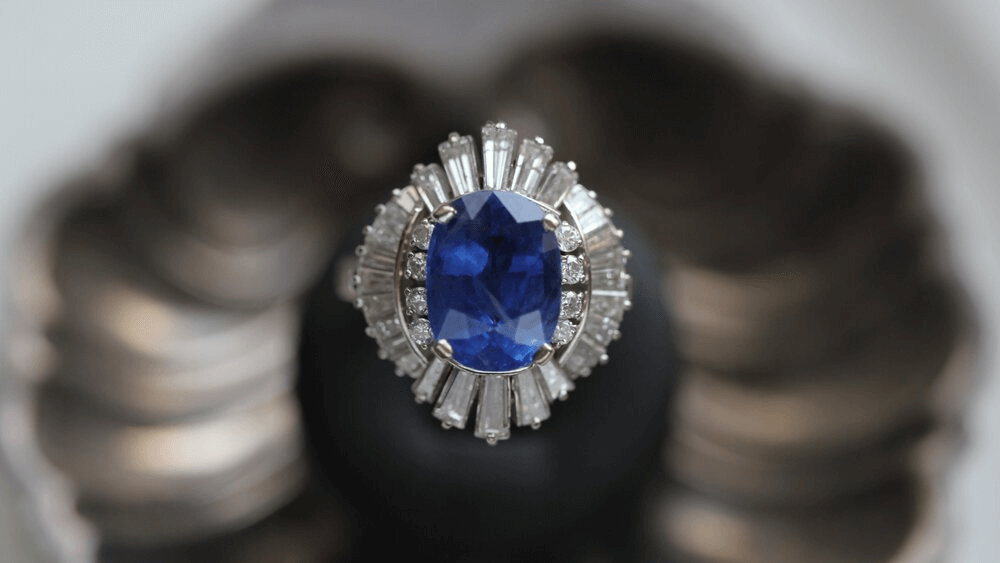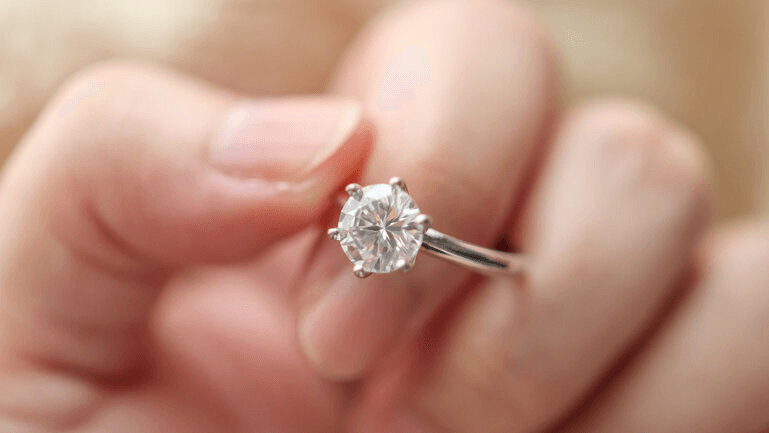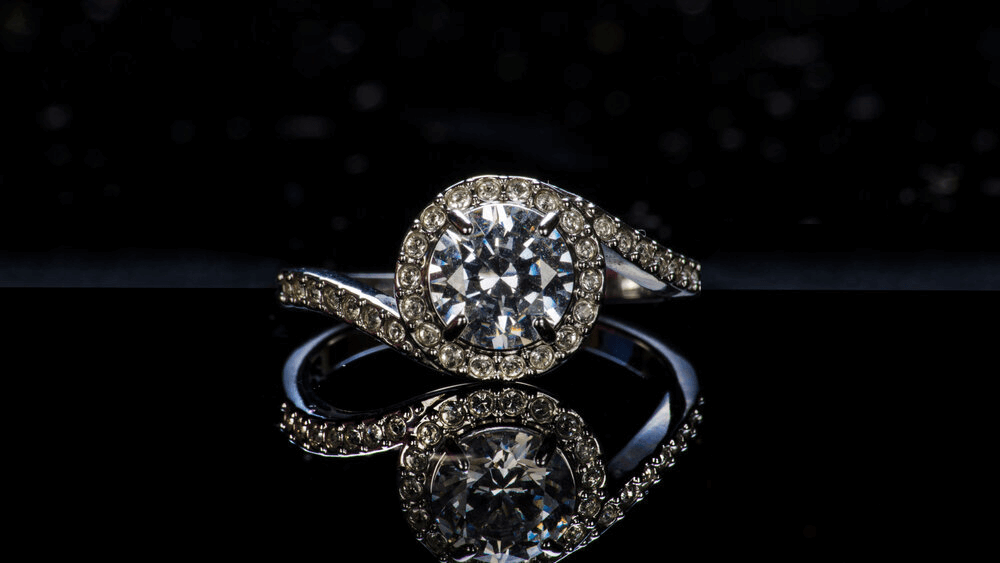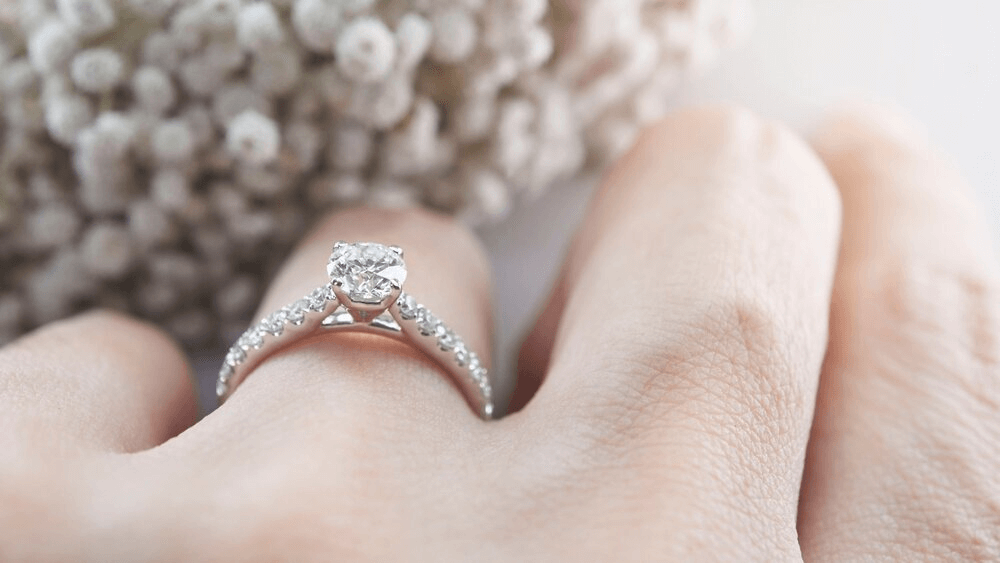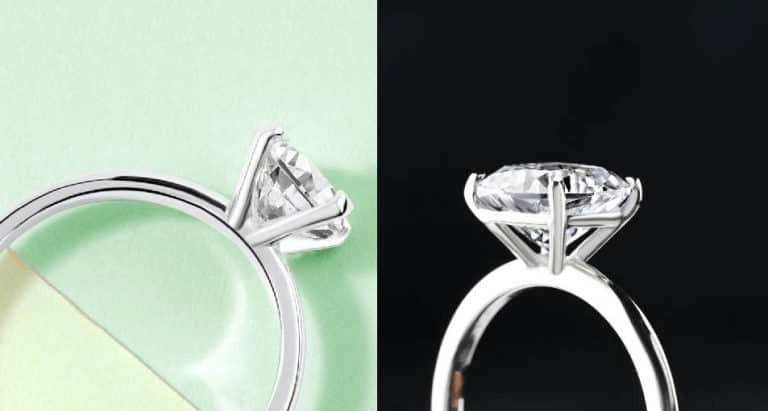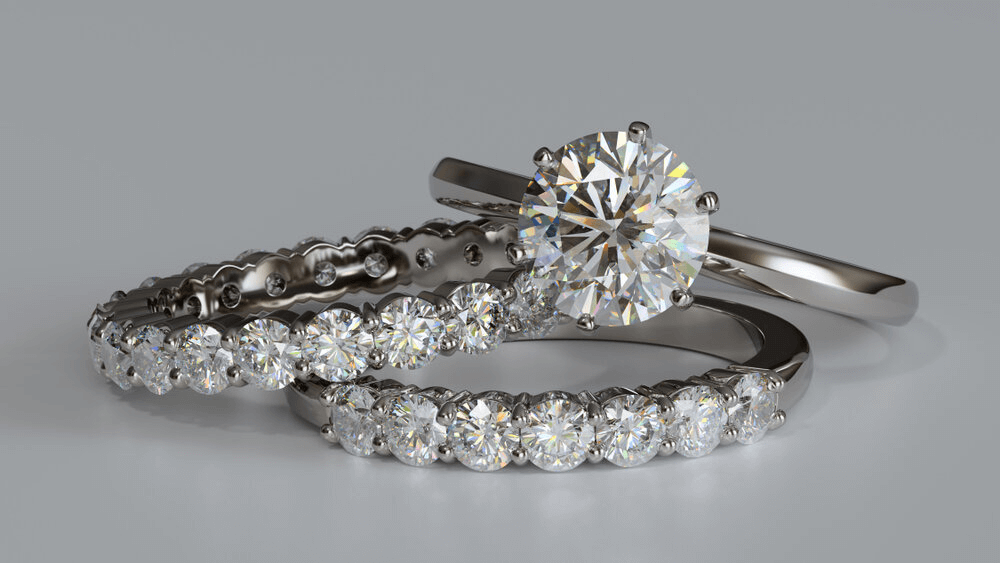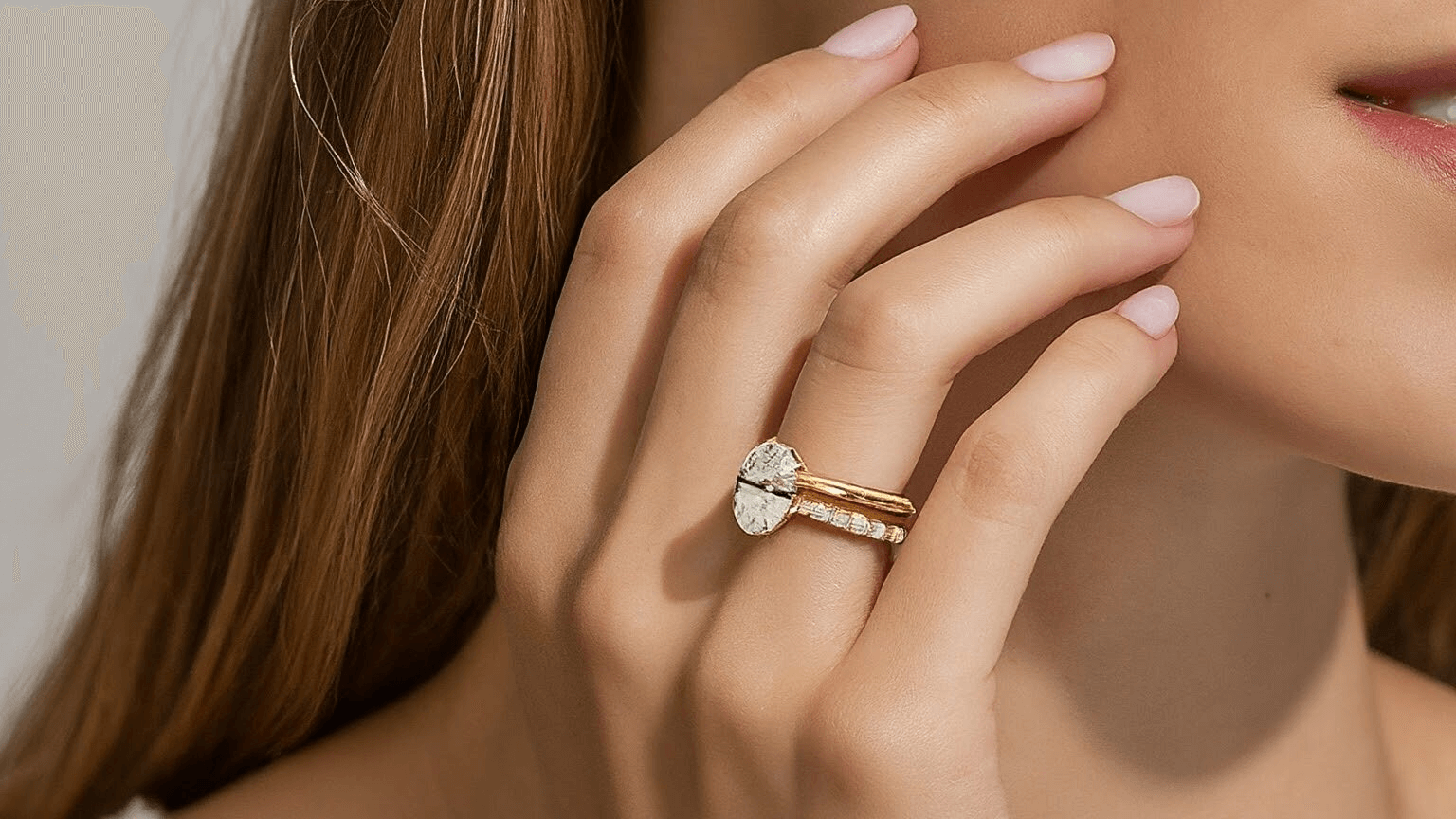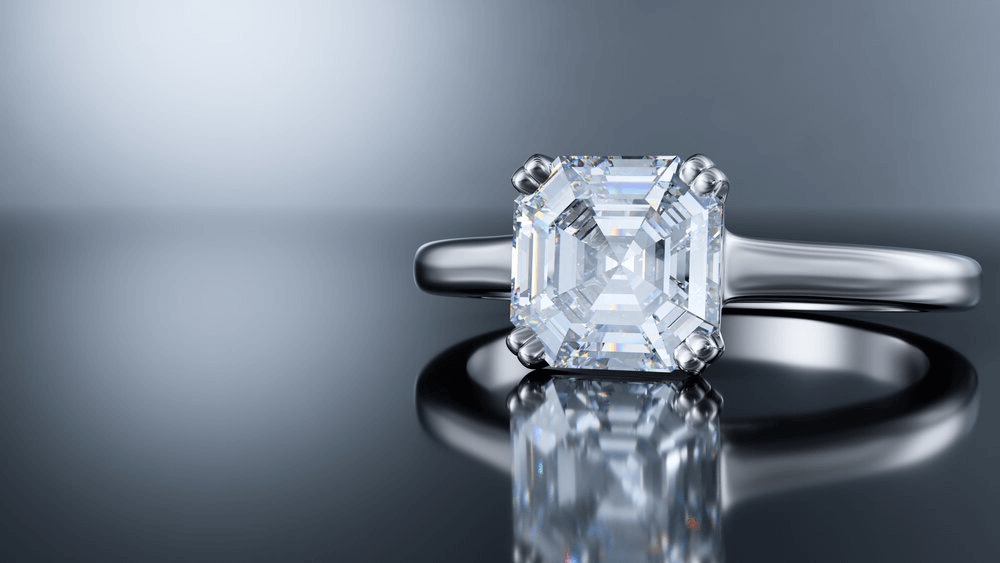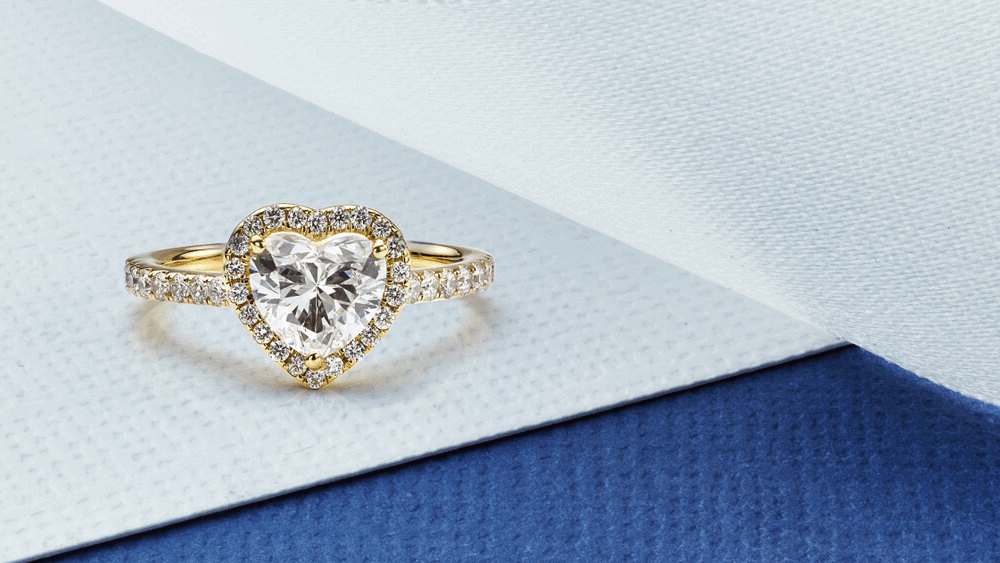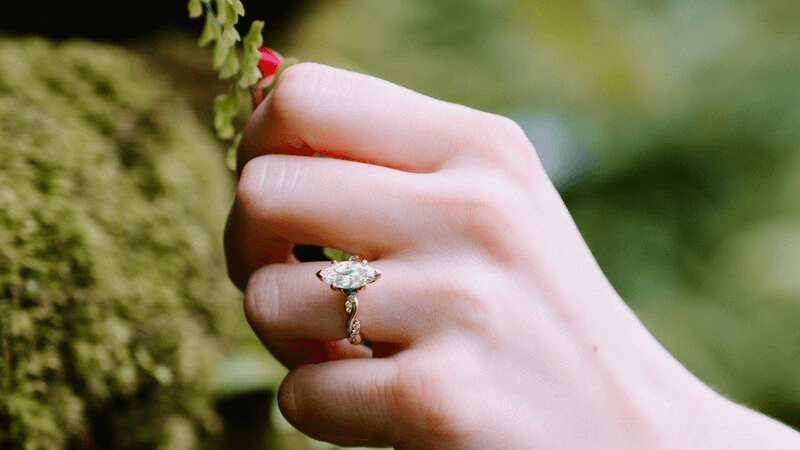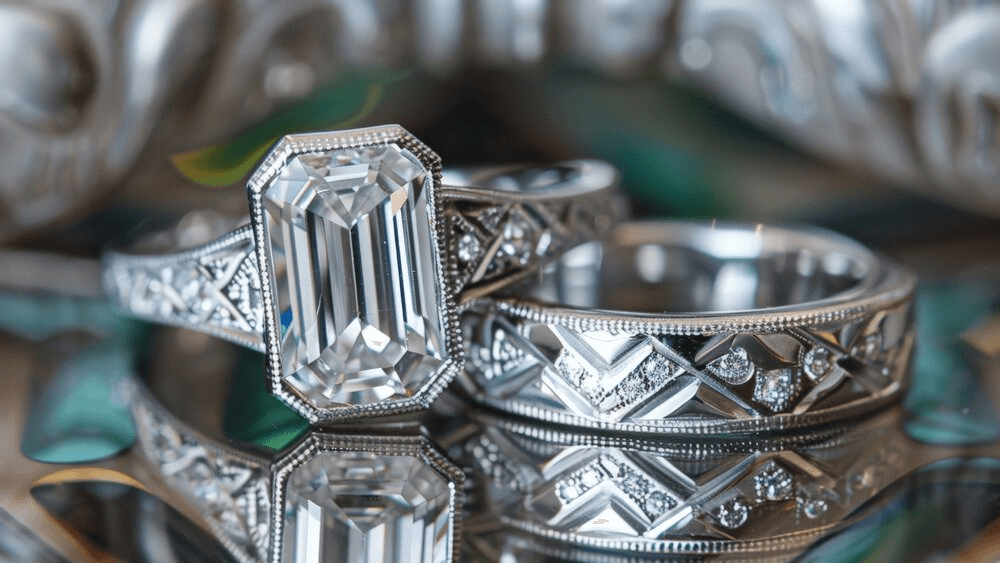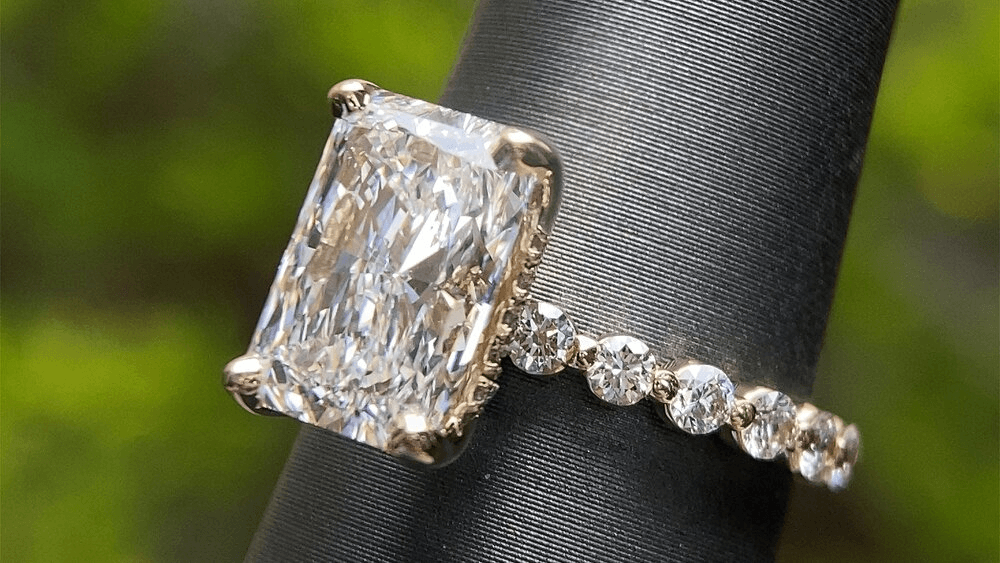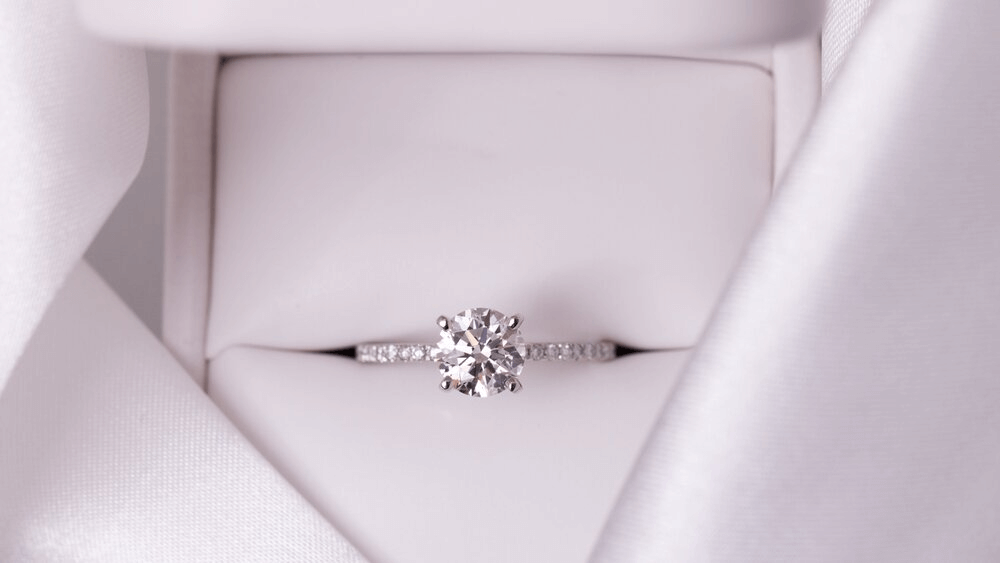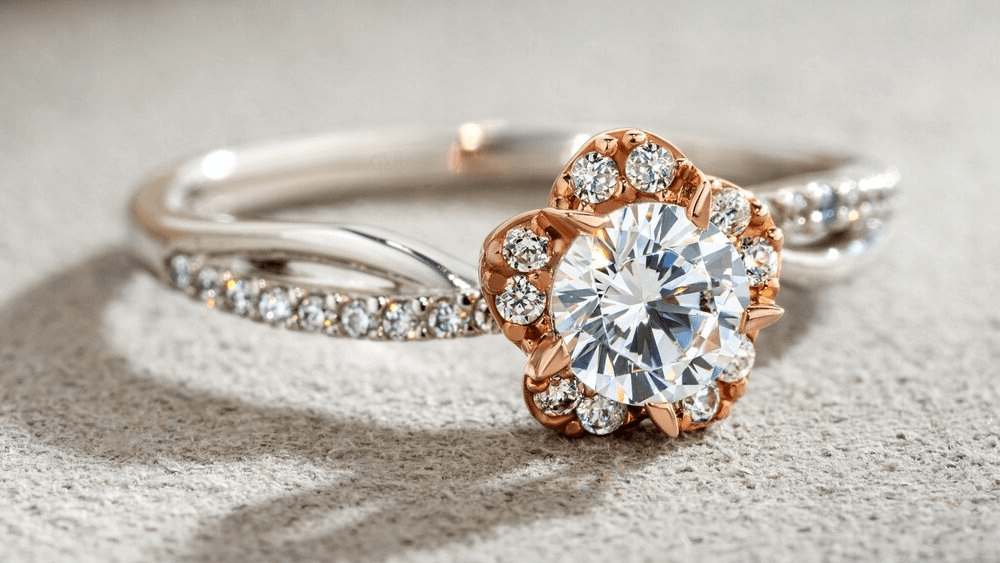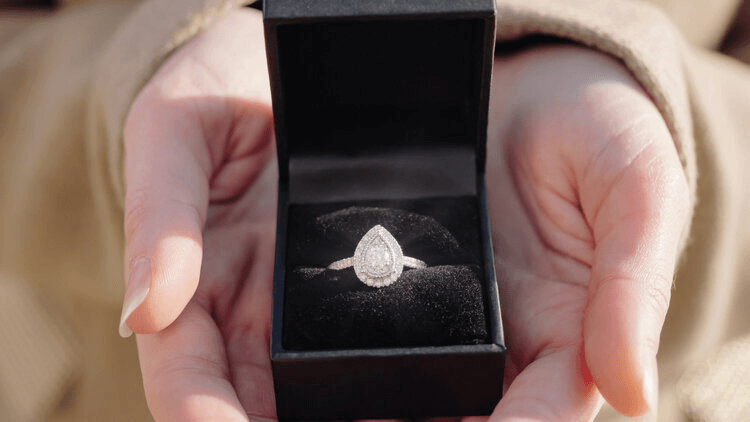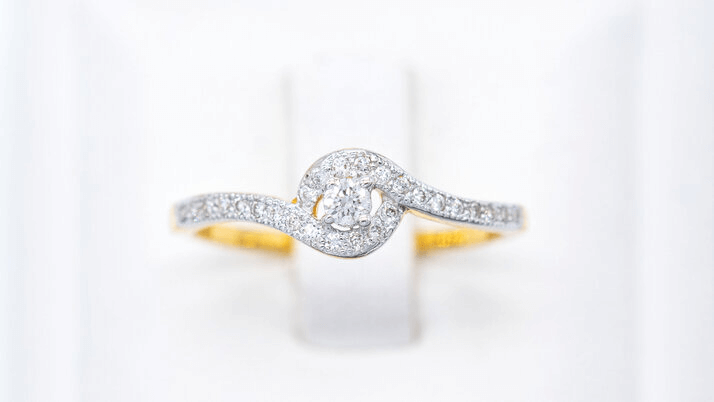Engagement Ring Head Styles Guide For to Perfecting Her Ring

By Gary A.

Edited by Olivia H.
Published Mar 26, 2022
Edited on Dec 18, 2024
When it comes to crafting the perfect engagement ring, choosing the right engagement ring head style is essential for enhancing the diamond’s beauty while reflecting personal taste.

Navigate This Guide:
- 8 Quick Tips for Choosing the Perfect Ring Head Design
- Introduction
- The Art of Choosing the Right Ring Head Style
- Trends in Engagement Ring Designs
- Maintenance and Durability of Different Ring Head Styles
- Our Expert Take
- 7 FAQs
Before we dive deeper into the specifics, here are some practical tips to help guide your decision-making process:
8 Quick Tips for Choosing the Perfect Ring Head Design
- Tip 1: Match the Head Style with the Diamond Shape: Ensure that the head style of the ring is compatible with the shape of the diamond. Certain head styles, like a bezel or prong, may complement specific diamond shapes better. Visual Appeal: The right combination can enhance the diamond’s appearance, making it appear larger or more brilliant.
- Tip 2: Consider the Ring’s Profile: The profile of the ring head can affect how comfortable the ring is to wear. A high-profile ring might catch on clothing, while a low-profile design might be more practical for daily wear. Aesthetic: The side view of the ring head contributes significantly to the overall style of the ring. Unique designs can add an extra element of beauty.
- Tip 3: Assess the Security of the Setting: Check the strength and quality of prongs in prong settings. They should be sturdy and well-crafted to securely hold the diamond. Metal Coverage: For bezel settings, ensure that the metal surrounds the diamond evenly and securely, without hiding too much of the stone.
- Tip 4: Pay Attention to the Prong Number and Style: The number of prongs can affect the diamond’s security and visibility. Four prongs offer more visibility, while six or more prongs provide added security. Prong Style: Different prong styles, like round, flat, or V-shaped, can change the ring’s look and how it interacts with the diamond.
- Tip 5: Understand the Impact on Diamond Brilliance: Some head styles allow more light to pass through the diamond, enhancing its brilliance. For example, a higher setting can let in more light from different angles. Metalwork Interaction: The design and amount of metalwork in the head style can impact how light reflects off the diamond, affecting its sparkle.
- Tip 6: Examine the Craftsmanship Quality: Look for the quality of craftsmanship in the ring head. Fine finishing, smooth edges, and precise setting indicate high-quality work. Symmetry and Alignment: Ensure that the head is perfectly aligned with the band and the diamond is centered within the setting.
- Tip 7: Balance Aesthetics with Practicality: Consider your daily activities and how the ring head style will fit into your lifestyle. A more intricate design might not be suitable for hands-on work.
- Tip 8: Long-Term Wear: Think about how the style will age over time and its maintenance needs. Some styles might require more frequent check-ups to ensure the diamond’s security.
Now that you’ve got these practical tips, use Jeweler AI below to find the perfect engagement ring that suits your style and budget:
Introduction
There are many different ways to keep a diamond in place, and to create a ring that offers a beautiful surprise from every angle.
Here are the top engagement ring head styles for you to consider.
Locating the Ring Head
The head is the center focus of the ring, where the diamond is located. It sits at the top of the finger, and typically comprises prongs or a bezel specifically designed to keep the diamond securely in place.
In other words, the head is the part you’re really going to be focusing on from now on. The shank (that’s the band) is important too, especially if you’re going to be adding in any accents or pavé, but everyone looks at the engagement ring head first.
Obviously, choosing a diamond will take top priority, but choosing your engagement ring head style is one of the fundamentals of designing an engagement ring.
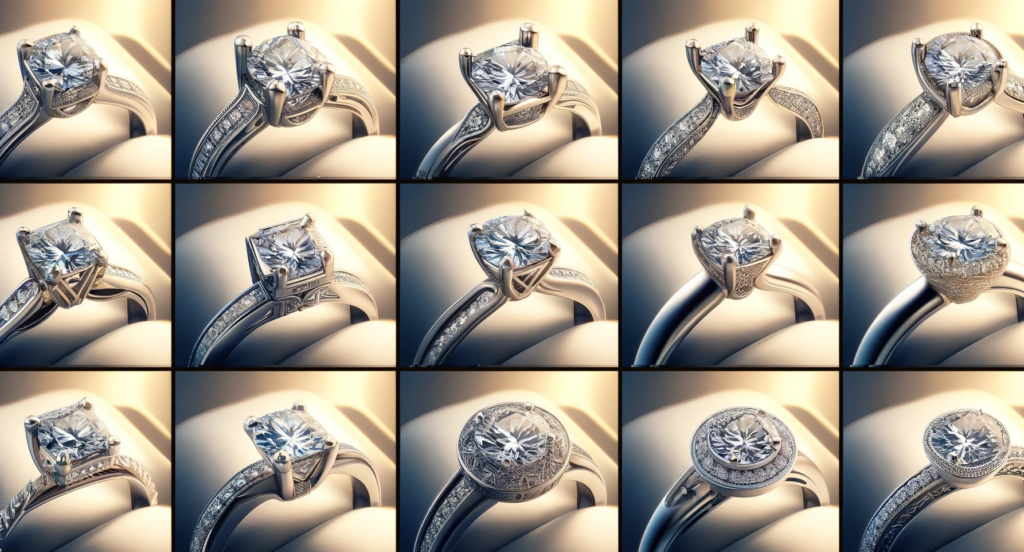
Exploring Key Engagement Ring Head Styles
When you’re looking at a ring from directly above, you’ll only notice the very tips of the prongs set just over the edge of the diamond, overlapping the crown by a couple millimeters at most.
From the side, however, you’ll be able to see more of the ring’s architecture – how the prongs connect with the shank. This feature, while it’s not the most obvious or looked-at aspect of an engagement ring, can look beautiful and elegant in its own right.
Solitaire Settings (Prongs)
The simplest prong settings feature prongs (usually four or six, but sometimes as many as eight or ten) branching up from the shank. The very top of each prong is bent over the diamond’s crown, to keep it in place, and the narrowing space between the tails of the prongs provide support for the diamond’s pavilion, to keep it from sliding up and down.
This ring head style is probably the most famous, most traditional style of all. It’s handy for raising the diamond high above the finger, and exposing as much of it to the light as possible. The Tiffany Setting, patented by Tiffany & Co. in the late 1800s, is one example, but there are plenty more prong designs available from jewelers up and down the country.
Halo Settings
The halo is consistently popular – a band of small ‘melee’ diamonds (or multiple bands) encircling the center diamond creates a dazzling display of fire and brilliance. THe halo looks good with any diamond shape, whether you’re complimenting a Round Brilliant, or creating contrast with a step cut like the Emerald.

Bezel Settings
If you don’t want any prongs in your ring, then the bezel is the way to go. Surrounded by a solid band of metal fitted perfectly to the shape of the diamond – and designed to overlap the very edge of the crown just enough to hold the stone in place – the bezel is a major break from the traditional ring designs.
Diamonds secured by bezels are designed to sit a lot lower, so there’s no need for any prongs or baskets to support the diamond’s base and culet.
The biggest sacrifice you’ll have to make here is brilliance. The bezel encircles the entire outer edge of the diamond, and hides the lower portion from the light. It creates a great, sleek, modern look, but at a cost. It does, however, look great with any diamond shape or metal.
One alternative is a half bezel, which only encircles a portion of the diamond. Depending on how it’s designed, you might need an extra prong to keep the ‘open’ portion secure, but your jeweler will be able to offer the best advice on this.
Trellis Settings
A trellis setting is based on the same idea as the basket. It utilizes that extra, horizontal band of metal around the diamond’s pavilion, to offer an extra element of security for the stone. The only difference is in the arrangement of the prongs, which are ‘woven’ to lie over one another, creating a deep ‘V’ shape visible from the side view.
The difference is subtle, but it’s a great way to soften the ring’s profile and create a more organic shape from the metal.
Basket Settings
A basket setting is one way to connect the prongs to the shank. A small ring of metal is created, large enough to encircle the diamond mid-way up the pavilion. This means it’s not noticeable from above. The prongs are then set at regular intervals, just as they are for simple prong settings.
The prongs keep the diamond in place, but the basket creates a support for the diamond from below. It offers an added layer of security compared with the prong setting, which some people prefer.
The drawback? Prong settings are designed to maximize the diamond’s brilliance, since they expose as much of it to the light as possible. By introducing extra metalwork into the head, and covering a portion of the pavilion, you’re going to lose a little light in the process.
The benefit? A basket setting is the perfect canvas for a hidden halo, meaning you can make-up for any lost brilliance (and get a little extra in the process).
The basket setting can also be combined with different prong styles, like the tulip, in order to achieve a more shape.
The Art of Choosing the Right Ring Head Style
If you want to maximize brilliance, a simple prong setting can’t be beat. If you’re more interested in creating a ring that surprises from all angles, a basket or trellis is your best bet.
Then again, the bezel is the perfect choice if you’re looking for a modern, comfortable, low-set engagement ring. It’s a particularly good idea if your partner leads a busy, on-the-go lifestyle, since it’s a lot less likely to snag or expose the diamond to potential damage.
Still, the prong, basket, and trellis head styles are a lot more durable than they look. A skilled jeweler will be able to make it look like your diamond is barely being touched by the metalwork, while being totally confident that you’re not going to look down one day and find that diamond missing.
Trends in Engagement Ring Designs
It’s worth keeping in mind that some ring head designs tend to go in and out of style, while others are considered too ‘classical’ to be subject to trends. The prongs and basket settings tend to be the most versatile throughout the years, whereas halos tend to go in and out of fashion every few years.
This doesn’t need to deter you from halos if that’s what you and your partner love – but, if you’re on the fence, it’s information worth knowing!
Maintenance and Durability of Different Ring Head Styles
Some styles will ‘trap’ dirt and grease more than others. Intricate gaps between accent stones, for instance, can see a build-up over time, whereas simpler designs like prongs tend to stay cleaner for longer.
In any case, a regular soak in warm, soapy water and a trip to the jewelry store for a more ‘intensive’ clean every six months or so will suffice, even with daily wear.
The jeweler can also check that all those prongs or design elements are holding up, and aren’t at risk of coming loose.
For a well-made ring, this is all you’ll ever need to do.
Our Expert Take
Choosing the engagement ring head is an important moment. While the diamond while attract the most attention, the ring head is the ‘wrapping’ – it’s what’s going to elevate that stone, and make it look even more beautiful than it does loose.
Make sure you keep your partner’s style in mind as you browse different options. Remember that, while some are slightly less practical than others, they’re all very secure and durable options for housing your diamond.
7 FAQs
- Q: What Are the Most Popular Engagement Ring Head Styles?
A: The most popular head styles include prong, bezel, halo, and pavé. Prong settings are classic and maximize the diamond’s visibility and brilliance, while bezel settings offer a sleek, modern look with added protection for the stone. - Q: How Do I Choose the Right Head Style for My Engagement Ring?
A: Consider the diamond’s shape, your personal style, and lifestyle. For active lifestyles, a more secure setting like a bezel might be ideal. For maximizing brilliance, a prong setting is preferred. - Q: Can Engagement Ring Head Styles Be Customized?
A: Yes, many jewelers offer customization options for ring head styles. You can choose the number and shape of prongs, or opt for unique designs like a trellis or basket setting. - Q: Do Certain Head Styles Make a Diamond Look Bigger?
A: Yes, some head styles can make a diamond appear larger. For example, a halo setting, where small diamonds encircle the main stone, can enhance its size and sparkle. - Q: Are Certain Ring Head Styles More Expensive Than Others?
A: The cost can vary based on the complexity of the design and the amount of metal used. Generally, simpler settings like a basic prong are less expensive than more intricate designs like a halo or pavé setting. - Q: How Do I Care for My Engagement Ring Based on Its Head Style?
A: Regular cleaning and inspections are important. High-set or intricate styles may require more frequent check-ups to ensure that the prongs or other setting components are secure. - Q: Can the Head Style of an Existing Ring Be Changed?
A: Often, yes. However, it depends on the ring’s design and the feasibility of modifying the setting without compromising the ring’s integrity or the safety of the diamond.
Find your perfect ring with Jeweler AI – explore unique engagement ring head styles tailored to your story.
FOLLOW-UP GUIDE SERIES





